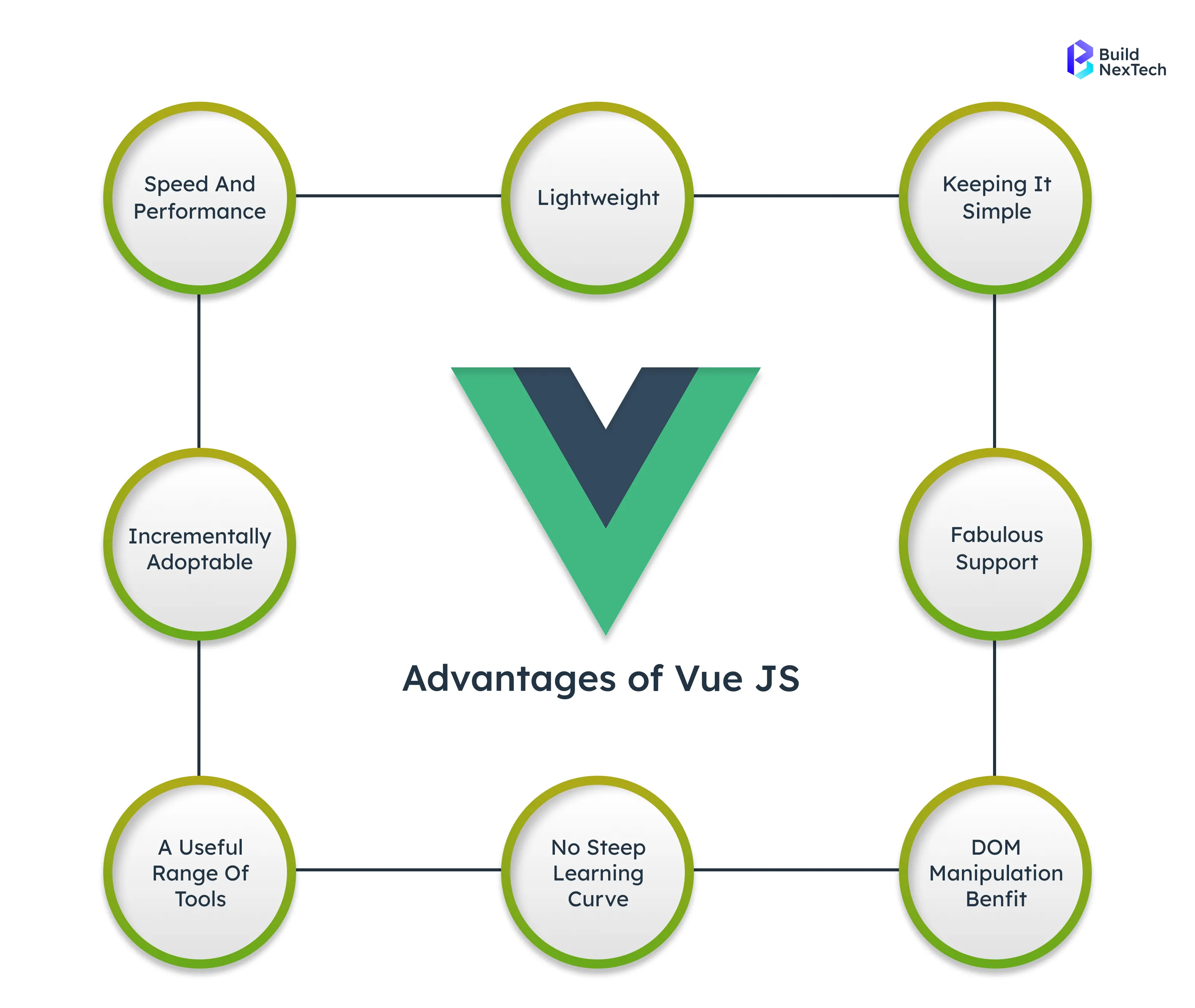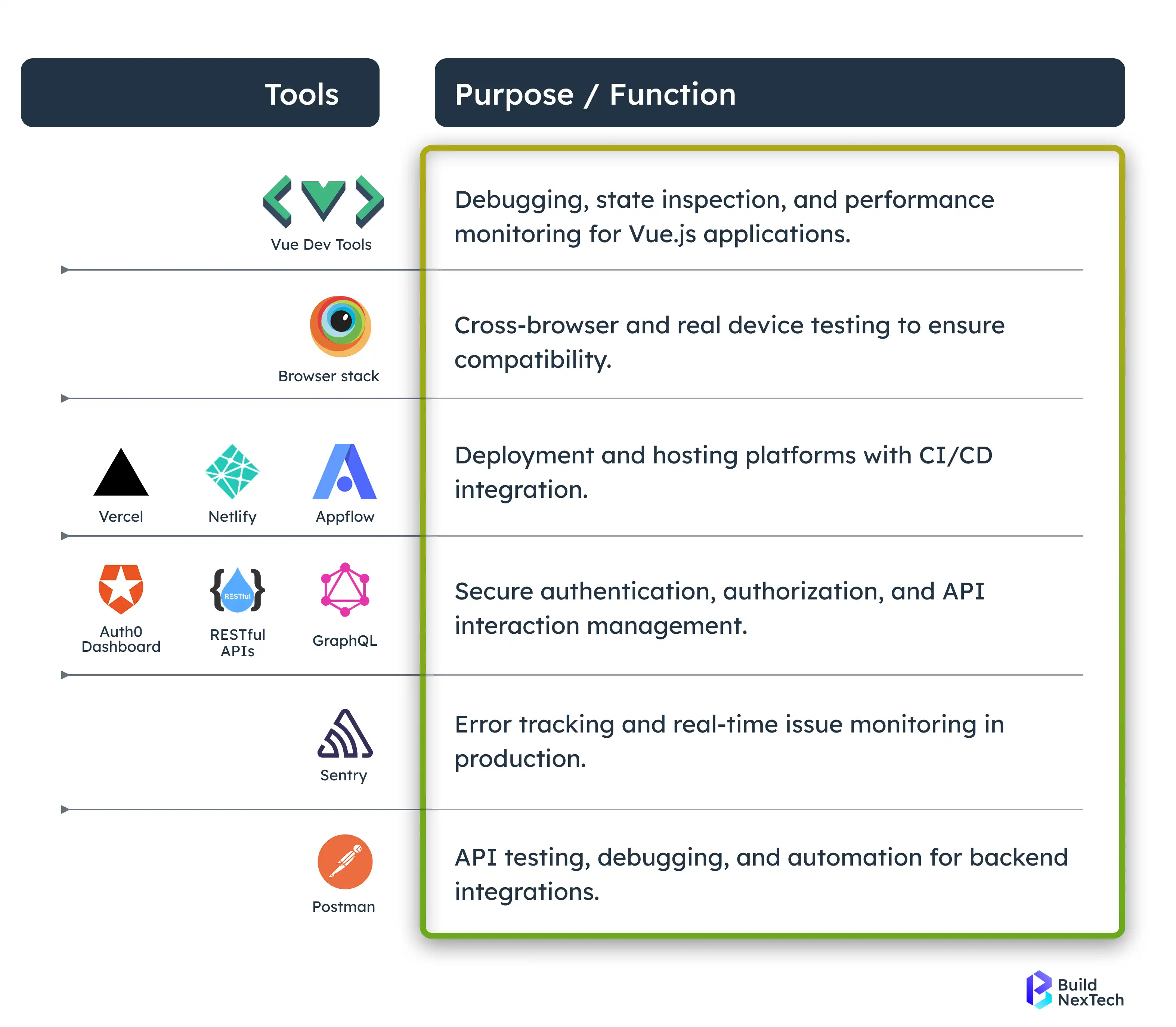Vue.js is a progressive JavaScript framework that has changed how developers build web applications. The flexibility offered by Vue as a frontend framework allows developers to create a component-based architecture, add reactive rendering, and rapidly develop interactive single page applications (SPAs) - all while using a framework that incorporates simplicity, flexibility, and performance for building maintainable web projects that can scale.
The rise of single page websites and Progressive Web Applications (PWAs) has changed how users interact with the web. A single page application JavaScript framework, such as Vue3, delivers dynamic content updates without refreshing the page. This results in better performance, reactive rendering, and an improved customer experience—distinct from traditional multi-page applications where the browser reloads the entire page for each user request.
Key takeaways
- Vue3 enables building scalable and high-performance single page applications and Progressive Web Applications.
- The Composition API and Reactivity System improve code organization and maintainability.
- Tools like Vuetify, Pinia, Nuxt, and Vite enhance productivity and streamline development.
- Regular website development services and maintenance to ensure better security, performance, and long-term stability.
- Vue3’s ecosystem and active community support make it a future-ready choice for modern web projects.
What is Vue3?
A Brief History of Vue.js
Evan You created Vue.js in 2014 to provide a lightweight, flexible one of the best frontend frameworks that combined the best elements of existing frameworks (particularly Angular and React). Vue3 has a focus on simplicity, flexibility, and improved developer experience with an emphasis on better reusability of components and a component-based architecture, as well as efficient reactive rendering for making scalable, maintainable SPAs and modern web apps. The timeline of the framework in its two previous iterations is outlined below.
Vue 1: Introduced the Options API (reactive data binding and template syntax) for the construction of single page websites.
Vue 2: Added the Vue CLI, Vue Router, Vuex, and an optimized virtual DOM to improve client-side performance and rendering speed.
Vue3: Released in 2020, this iteration included the Composition API, a new and improved Reactivity System, TypeScript support, less impactful bundle sizes, and associated performance improvements for interactive SPAs.
Popularity Metrics:-
Vue3 is a leading frontend framework for building Progressive Web Applications, single page websites, and interactive SPAs. It boasts a vibrant community, extensive documentation, and a rich ecosystem of tools like Vue Router, Vuex, and Vuetify, enabling developers to create scalable, high-performance, and maintainable modern web applications with ease

Core Features of Vue3
- Composition API: The Composition API streamlines component structure and code organization for scalable SPA JavaScript applications. Developers can manage the state of the application, reactive rendering, and asynchronous representations using Vue ref, vue props, vue defineProps, or Vue 3 props.
- Reactivity System: Vue 3 includes an updated reactivity system that makes data changes more efficient. This reactivity system will additionally improve performance when rendering interactive applications such as SPAs, dashboards, and admin panels while also allowing developers to use teleport, fragments, and Suspense to organize UI Components.
- TypeScript Support: Vue 3 delivers native support for TypeScript, giving developers added type safety, a better developer experience, and an easier code review process. This will be extremely beneficial to enterprise applications, full-stack development, and Progressive Web Applications.
- Other Enhancements
- v-model, v-for, v-if directive for dynamic HTML pages
- Vue Router and routes for the routing system
- Pinia and Vuex for state management
- Nuxt, Ionic, and Capacitor support for mobile apps and Progressive Web Apps
Vue 3 presents a complete kit of tools that increase performance, allow for scaling (both front-end/back-end/codebases), and create a better user experience. Compounded with Build + Multiple Bundle options, Components Architecture, the Composition API, Reactivity System, and TypeScript support a developer can develop an interactive SPA, single page web site, dashboard, or Progressive Web Application without sacrificing their time in completing responsive, performant applications across web and mobile, for any device while staying clean and efficient with component architecture.
Why Choose Vue3 as Your JavaScript Framework?
Vue3 features a powerful mix of simplicity, reliability, and flexibility. Its enhanced Reactivity System improves developer experience by making it easier to manage application state while developing single page applications and Progressive Web Applications. The framework’s support for TypeScript, alongside Vue Router, Pinia, and Vuetify UI toolkit, makes the creation of interactive dashboards, administrative panels, and mobile application projects a breeze. Compared to React vs Vue or Vue JS vs React, Vue3 loads faster, is smaller in bundle size, and has an easy-to-learn curve, making it useful for all project sizes.
Advantages of Vue3 Over Other Frameworks
Vue3 stands out when compared to React vs Vue, Vue vs React, or Vue JS vs React due to its lightweight design, flexible API, and enhanced performance.
Vue3 delivers a more efficient and effective development experience thanks to its light-weight architecture, resulting in smaller bundle sizes and improved performance. Features such as the Improved Reactivity System, Composition API, and Vue Router support make Vue3 feasible for authoring single page websites, interactive dashboards, and Progressive Web Applications, which are fast, scalable, and easy to use for the web on both desktop and mobile.

Ideal Use Cases: When to Choose Vue 3
Vue3 is adaptable and applicable to many industries, from e-commerce to enterprise dashboards.
Great Use Cases for Vue3:
- Single Page Websites: Fast client-side rendering, single page web template, & interactive SPAs.
- E-Commerce Platforms and Wireless Integrations: Wix ecommerce integration will rely on Vue3's responsive design and component-based architecture.
- Dashboards and Admin Panels: With Vuetify and Vue Router, building engaging dashboards that can be scaled and maintained with Vuex/Pinia state management is easy.
- Mobile Applications: Ionic, Capacitor, and Cordova can use Vue3 to create native functionality for interactive SPAs.
Examples of Successful Vue3 Applications:
Vue3 is increasingly adopted by startups and enterprises for Progressive Web Applications, dashboards, and interactive SPAs, thanks to its scalability, reactive system, and frontend tools.
Implementing Vue3 in Your Projects
Getting Started with Vue3
- Installation & Setup
npm install -g @vue/cli
vue create app-nameAlternatively, use Vite React for faster development:
npm create vite@latest- Basic Project Structure:
- App.vue: Root component
- HelloWorld.vue: Sample component
- src/assets/: Store images, CSS, JS
- public/index.html: HTML page template
- Learning Resources:
- Official documentation
- Hyperskill and JetBrains Academy tutorials
- GitHub Pages examples and open-source Vue 3 projects
Building a Basic Single Page Application
- Create Components using Vue 3 props and Composition API
Build reusable, modular components by leveraging Vue 3 props for data sharing and the Composition API for organized, efficient logic. This approach enhances scalability, maintainability, and performance in single page applications. - Implement Vue Router for routes
Use Vue Router to manage navigation within your Vue3 application, enabling smooth, dynamic page transitions without reloads. It supports nested routes, lazy loading, and router guards for secure, fast user experiences. - Use Vuex or Pinia for state management
Manage your application’s global state effectively using Vuex or Pinia, ensuring consistent data flow across components. Pinia’s Composition API integration provides a cleaner, modern alternative for scalable state management.
Code Example:
<script setup>
import { ref } from 'vue';
const counter = ref(0);
function increment() {
counter.value++;
}
</script>
<template>
<div>
<h1>Counter: {{ counter }}</h1>
<button @click="increment">Increment</button>
</div>
</template>Performance Tips:
- Use Suspense for async components
- Lazy-load Vue Router routes
- Debug with Vue DevTools
- Optimize deployment using Vercel, Netlify, or Appflow
Maintaining Websites Built with Vue3
It's important to look after your websites that were developed with Vue3 for security, speed, and overall functionality. Regular updating, performance testing, and bug fixing will keep your single page applications, dashboards, and Progressive Web Applications running smoothly. By utilizing a website maintenance service, you can ensure long-term scalability, improvements in user experiences, and lower website maintenance plans and costs.
Importance of Website Maintenance Services
Website maintenance services are essential for keeping Vue3 applications secure, fast, and fully functional. Key services include:
These services are vital for reducing website maintenance costs, ensuring smooth website support services, and keeping projects aligned with modern web technologies.

The Future of Vue3
Vue 3 has significantly enhanced the Composition API and Vue 3 props, enabling developers to write more organized, reusable, and scalable code. It also supports Server-Side Rendering (SSR) and Static-Site Generation (SSG), while integrating seamlessly with React, Ionic, Capacitor, and Vite to build fast, interactive single page website design, Progressive Web Applications, and mobile apps. Vue3 aligns with modern software development trends by supporting interactive SPAs, single page website templates, and enterprise-scale applications. With advanced features like Suspense, Teleport, Pinia, and Vue Router, it remains competitive with React, Angular, and legacy tools like jQuery.
Conclusion
In summary, Vue3 is not only a frontend framework but a complete ecosystem for modern web development. In addition to the Composition API, Reactivity System, and TypeScript support, Vue 3 also promotes scalability, modular architecture, and developer productivity.
Vue's compatibility with tools such as Nuxt, Vite, and Pinia, as well as the introduction of teleport, Suspense, and fragment components, only provides greater assurance for creating real-time applications, interactive SPAs, or Progressive Web Applications.
Businesses and developers who are pursuing highly efficient deployments, solid state management, and user experience-focused product offerings will find Vue3 is a progressive choice within the constantly changing modern web technology landscape.At BuildNexTech, we combine the power of Vue3 and modern stacks like MERN Stack development to deliver cutting-edge web development services that help businesses build fast, scalable, and engaging digital experiences.
People Also Ask
What makes Vue 3 a progressive framework?
Vue 3 is progressive because you can use it incrementally — from enhancing a single webpage component to building full-scale SPAs.
How is Vue 3 different from Vue 2?
Vue 3 offers better performance, a smaller bundle size, and introduces the Composition API for improved code reusability and scalability.
Is Vue 3 suitable for large-scale enterprise applications?
Yes, Vue 3’s modular structure, TypeScript support, and efficient state management make it ideal for complex enterprise projects.
What are some common use cases of Vue 3?
Vue 3 is used for building single-page apps, dynamic dashboards, interactive web interfaces, and mobile apps with frameworks like Ionic or Quasar.


























.webp)
.webp)
.webp)

